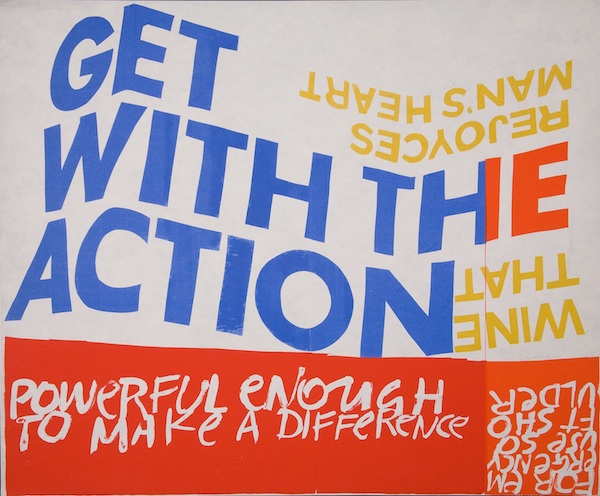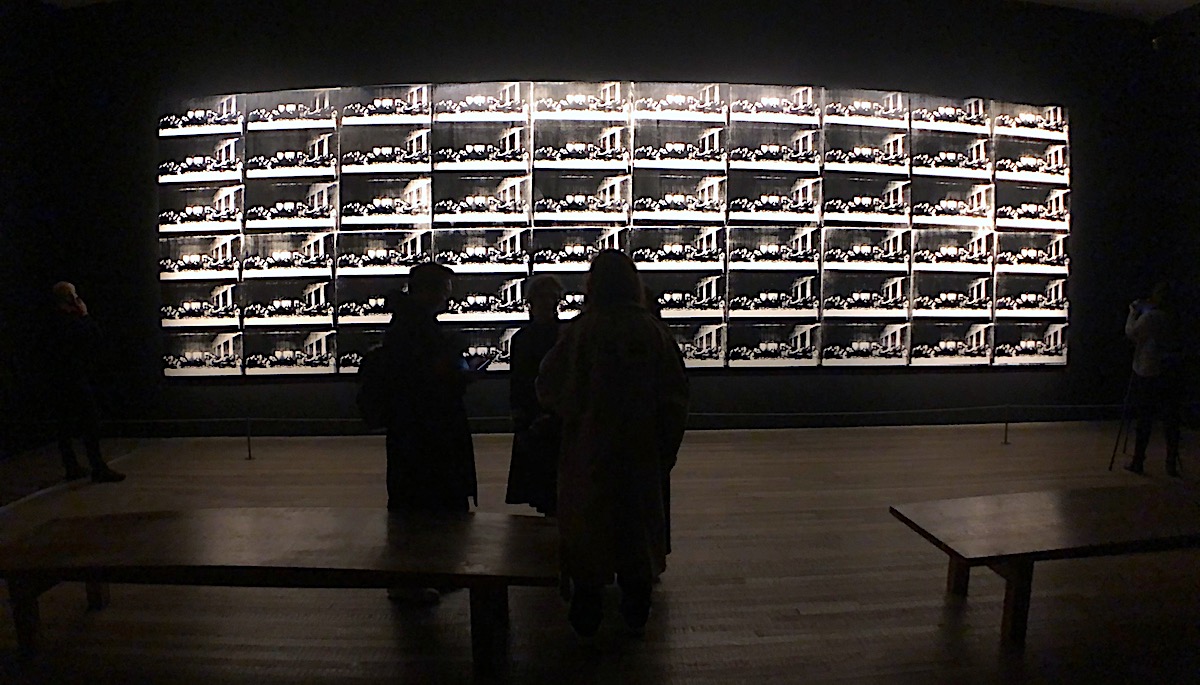Edward Lucie-Smith has rightly wondered, as ‘the contemporary art world goes dark, and as galleries – official spaces and commercial ones – slam shut their doors,’ ‘what the art world will be like once all this is over.’ However, the immediate wondering is simply, what do we do now?
Works of art create their own space for contemplation – JE
Sue Hubbard has written that what is certain is that ‘artists will retreat to their studios’ because ‘isolation is essential if we are going to create a painting, a novel, a poem or an installation worth its salts.’ She writes that to ‘turn inward is to find the nub of creativity’ and quotes the philosopher, Pascal, who once, famously, remarked: ‘the sole cause of man’s unhappiness is that he cannot stay quietly in his room’. That is also advice coming from the Desert Fathers who had the saying: ‘Go to your cell and your cell will teach you everything you need to know.’ This is all a means of saying that this enforced Sabbath can be productive if used for contemplation.

In 2007, the Uffizi Museum in Florence lent Leonardo da Vinci’s ‘The Annunciation’ to the Tokyo National Museum for three months. More than 10,000 visitors flocked to the museum every day to see the renaissance masterpiece. A number which, when divided by the museum’s opening hours, equates to each visitor having about three seconds in front of the painting – barely long enough to say the artist’s name, let alone enjoy the subtleties of his work.
By contrast, a well-known art historian observed as he entered the first room of the Leonardo da Vinci exhibition at the National Gallery went nose-to-nose with Leonardo’s ‘The Musician’. There he stayed for about 10 minutes, rocking backward and forwards, before moving from side-to-side, and then finally stepping back four paces and eyeing up the small painting from a distance. And then he repeated the exercise. Twice.
The 10,000 visitors per day visiting the Tokyo National Museum during those three months wanted to see Leonardo’s ‘Annunciation’, but did they really ‘see’ it? They certainly didn’t see it in the same way that the art critic saw Leonardo’s ‘Musician’ and that was because the art historian paid real attention to the painting.
Paying attention is a feature of making art, just as of viewing art. Grayson Perry told this story in the last of his Reith Lectures: ‘Recently a friend told me that she was working on an education programme at the Whitechapel Art Gallery and at the beginning of the project she asked the children, she said, “What do you think a contemporary artist does?” And this very precocious child, probably from sort of Muswell Hill or somewhere like that, she put her hand up and she said, “They sit around in Starbucks and eat organic salad.” Now it was probably quite an accurate observation of many fashionable artists in East London, but I thought … you know anyway. So then after this, they spent some time looking at what contemporary artists did. And at the end of the project, she asked them again, “What now do you think an artist does?” And the same child, she said, “They notice things.” And I thought wow, that’s a really short, succinct definition of what an artist does. My job is to notice things that other people don’t notice.’
In order to do this, a nun who taught art creatively and created her own Pop Art, has argued that artists ‘are people who have developed their seeing muscles in much the same way as weight-lifters develop their lifting muscles – by constant, disciple use’. To really see, she suggests, ‘implies making an appraisal of many elements’ because there are ‘many styles and ways of seeing’. We have many words for these different styles of seeing, such as discerning, perceiving and beholding. Then, when ‘we finally comprehend and understand a situation our response is often, I see!’ Connections have been made and truth revealed.
Looking, she says, is not the same as seeing: ‘The Webster’s definition of looking is, in part, to receive an ocular impression. I looked at the morning paper implies a casual perusal, without gathering or connecting. But seeing begins with looking. Look hard, look long, look soft – with your peripheral vision. Look at things upside down, through finders, examining details and seeing them as complete pictures. Looking is the beginning of seeing.’
The Art Department of Immaculate Heart College, where Sister Corita taught, essentially taught students to see. Sister Magdalene Mary, who led the Art Department when Sister Corita joined, believed that education ‘is the by-product of the disinterested quest for all that deserves to be sought and loved for its own sake.’ As a result, students like Jan Steward came to understand that by ‘learning to see the beauty in the world around us, and by looking at many things (not necessarily called art), we can lose our judgemental attitudes about pretty and ugly, good and bad art.’ Doing so, enabled students to then find their own visual masters.
Works of art create their own space for contemplation and come alive when they are contemplated; firstly by the artist in their creation and secondly in their viewing by those who come to look. Art galleries are, therefore, places of contemplation and are generally constructed to facilitate this purpose, i.e. as minimalist white cubes containing little that will distract the viewer from the art.
Faith communities have responded to lockdown by taking their services and other activities online creating a plethora of contemplative moments there enabling those who wish, to pay contemplative attention to the present moment. Their communities are essentially going to their cells and looking to see what their cells will teach them. The philosopher Simone Weil said that attention – the kind of close contemplative looking that is fundamental to the experience of art – when ‘taken to its highest degree, is the same thing as prayer’. That is because it ‘presupposes faith and love’. Therefore, ‘absolutely unmixed attention is prayer.’
Whether we see connections or disjunctions between art and faith, this would seem to be a time for seeing – for insight – whether creating or contemplating. How will the art world create cells of contemplation now the galleries are closed and how will the cells we create teach us everything we need to know?
Words Revd Jonathan Evens © Artlyst 2020 – Top Photo: P C Robinson © Artlyst 2010

